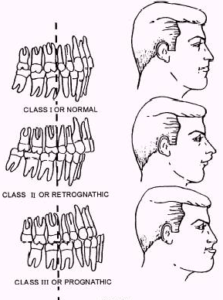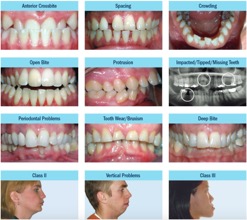Malocclusions
Occlusion is the contact between the maxillary and mandibular teeth. Any deviation from normal occlusion is considered as malocclusion. With malocclusion, oral functions are often affected, such as difficulty in chewing, swallowing, and speech. It may also cause temporomandibular joint (TMJ) pain, tooth, gums and muscle trauma, and can contribute to sleep apnea. In addition to orthodontic treatment, orthognathic surgery, performed by an oral & maxillofacial surgeon is required to correct complex malocclusions. These procedures are typically performed in a hospital setting, and usually outside of an OMS clinic. The RN’s perioperative role in orthognathic surgery consists of post-operative care. Classifications of occlusion are based on the relationship between the permanent maxillary and mandibular first molars. A Class 1 relationship (normal) refers to the contact of the maxillary first molar being slightly posterior to the mandibular first molar. A Class 11 relationship (retrognathic) refers to the contact of the maxillary first molar being anterior to the mandibular first molar. A Class 111 relationship (prognathic) refers to the contact of the maxillary first molar being completely posterior to the mandibular first molar.
Classification of Occlusions:

Below are examples of common malocclusions:

